I was about twelve when I learned that the Wrigley Mansion (#35 on my "100 Things in Arizona" list) in north-central Poenix belonged to THAT Wrigley, the gum guy. I wanted to see the inside of it for years but it wasn't open to the public until recently.
Wrigley Mansion sits atop a hill near the Arizona Biltmore Hotel. Actually William Wrigley, Jr. was one of the developer/owners of the Arizona Biltmore Hotel in 1930. He and his lovely wife, Ada, loved staying there and in fact, there was at one time a path that led from their home to the hotel. But I am getting waaaay ahead of myself.
The front entrance must have looked grand back in the day without the parking valet and commercial trash cans for tourists to throw away drinks, etc. before entering. Stairs on either side of the entry walkway lead up to the magnificent front door.
William Wrigley, Jr. was born into a poor family in 1861 in Philadelphia. His father enlisted in the Union Army and William, Jr. ended up living with an aunt and uncle. After the war, his father began manufacturing soap and at age seven, William, Jr. took a basket of soap to the market to sell. He was relentless and constantly thought of ways to get people to buy his soap... and was bitten by the entrepreneur bug. He ran away at age 11 to sell newspapers in Manhattan but returned home when that didn't work out. After being expelled from school shortly after that, his father put him to work full-time in his factory stirring boiling soap with a paddle. William, Jr. felt he would be more effective selling the soap and finally convinced his father to make him a salesman.
He was, indeed, a very good salesman having the ability to to see things from the buyer's perspective. His pleasant personality, patience and business sense contributed to his selling success. In 1885 he met Ada Foote and it was love at first sight! They were married later that year.
William, Jr. liked to use the "free gift with purchase" method of selling while his father felt the soap should sell on its own merits. After several harsh disagreements, William Jr. left his father's business in 1891 and set up his own in Chicago, the fastest growing city in America. The William Wrigley, Jr. Company sold soap and later his own brand of baking powder with gifts of umbrellas, cookbooks, silver-plated teaspoons, whatever he could find that he thought people would want. He changed his gifts frequently to create urgency in buying.
So how did he get in the gum business? Gum was already a well-established product in 1892 when he chose it as the free gift to sell sets of colored jars. He decided to manufacture his own brand of gum - called "Lotta" which stood for "a lot of value." The gum became a hit and he began using other products as free gifts with his gum. In 1895, the Juicy Fruit and Spearmint brands appeared and the rest, as they say, is history.
Wrigley thought advertising was the key to a successful business and he invested nearly every cent he made for years back into advertising, often to the scoffing of other great businessmen. HIs company continued to expand and in 1919, sales topped $27 million! He was one of the largest employers of mass advertising in the nation, spending millions of dollars on advertising alone.
Now an extremely wealthy businessman, Wrigley had acquired an estate in Wisconsin, an Italian Renaissance mansion in Pasadena and later owned 99% of Catalina Island. He bought prime Chicago real estate and built the 30-story Wrigley Building as well as an adjacent building of near-equal stature. Friends asked him to join them in a syndicate to purchase the Chicago Cubs. The Cubs were not doing well and soon the three friends became sole owners. Not being a baseball enthusiast, he had only purchased a ten percent share but later bought out the largest share holder becoming principal owner of the Cubs and Cubs Stadium which was later renamed Wrigley Field. Having the Cubs completely changed his mind about baseball and he seldom missed a game. In fact, he later acquired the minor-league LA Angels and built another Wrigley Field in LA.
At that same time, he acquired a major interest in the Los Angeles Biltmore Hotel, a luxury hotel now known as the Millennium Biltmore Hotel. Business partners convinced Wrigley to invest $1 million in the Arizona Biltmore. It became a financial fiasco and he was forced to take over the project. Since he was spending so much time in Phoenix now, he decided to build a home as a 50th anniversary gift for his beloved Ada. Originally called La Colina Solano, the 16,850 square foot Wrigley Mansion was completed in 1931 at a cost of $1.2 million.
William Wrigley, Jr. & Ada Foote Wrigley
The views from Wrigley Mansion are breath-taking. There are balconies, porches and decks on every side making it a great home for entertaining.
A sea of palm trees and red-tiled roofs merge into the downtown skyline from the southwest side of the property.
Camelback Mountain (and its famous Praying Monk formation) are visible from the east side.
As spectacular as the views are, the interior of the house is even more so. Despite being built during the Great Depression, no expense was spared. There are 24 rooms, 12 bathrooms and eight unique fireplaces. The mansion was never intended to be a main residence; it was their "winter cottage" and was used for only a couple of weeks once or twice a year. The Wrigleys split most of their time between their Chicago home and Catalina Island.
The Library (top) is an immense wood-paneled room with several sofas and chairs arranged in conversation groupings. Surprisingly, there are not that many books.
The grand staircase (bottom left) is the centerpiece of the somewhat circular-shaped entry way. All the artwork currently in the mansion are reproductions but while the Wrigleys owned it, their considerable art collection graced the walls.
This fireplace (bottom middle) was my personal favorite - it looks so "happy!"
The mansion has several dining rooms, each with a different feel. This one (bottom right) was my favorite because it is warm and inviting without being ornate.
Just off the entryway is a small room not much bigger than a coat closet housing the original telephone switchboard used for the mansion. The mansion was not just their living quarters; Wrigley also conducted business from there making several phone lines a necessity. What I found quirky was that he wallpapered the tiny room in shiny foil from his gum wrappers.
Just a tad eccentric, don't you think?
The ceilings of the mansion are as unique as the rest of the home. Each room's ceiling is a little different and has a story to tell. Some have wood beams or painted artwork or stenciling or gold-gilding creating a collage of decorating styles and techniques. Unfortunately, none of the photos I took show off the ceilings at their best. If you tour the mansion, be sure to look UP!
Most of the furnishings are original to the mansion. In the immense family living room sits one of two Steinway grand player pianos in the WORLD. The other one is at the Smithsonian and reportedly doesn't play. Our tour guide told us it was William Wrigley, Jr.'s most-prized possession; he and Ada often spent hours in that room listening to it. It can accommodate up to ten player rolls at a time - all of them filled with George Gershwin music played by Gershwin himself for the rolls. Along with the player piano is a "selector panel" with a very long cord - kind of like an old-fashioned, very large remote - so William and Ada could sit on the sofa and change which song was playing on the piano!
Liberace once offered Wrigley's family a blank check for the piano - they turned it down saying the piano must stay with the mansion.
The mansion was completed in 1931 and William Wrigley, Jr. died in the mansion just a year later at the age of 71. Ada continued to live in the mansion for a couple of weeks at a time, several times a year until her death in 1958. At that time, the mansion went through several ownership changes until Western Savings bought it and renamed in The Mansion Club. It was a private and very exclusive club for Phoenix's elite. After the Savings & Loan debacle in the 1980's, the mansion was in danger of being razed. George "Geordie" Hormel, heir to the Hormel meatpacking empire, purchased the mansion in 1992, changed its name back to "Wrigley Mansion" and began restoring it to its original state. He believed that the mansion belonged to the people of Phoenix as a historical treasure and should be open to all people, not just the elite. However, zoning restrictions require that the mansion must retain a private club status. Geordie declared the membership fees were to be a formality, kept reasonable and the proceeds of the membership fees donated to charity, all of which continued after his death in 2006. The mansion is now owned by his fourth wife and children. Membership fees are currently $3 for a trial (one visit), $10 annually for a social membership (for people who like to dine at the restaurant), $50 annually for a special wine membership and $150 annually for a corporate membership. We ate lunch in the "world-class" restaurant, Geordies, after our tour. Although we enjoyed the tour and would recommend it, lunch was just so-so and rather pricey.
The grounds are beautifully maintained and according to our tour guide, the "perfect place for weddings, special parties or banquets."
As a young girl, the mansion was what impressed me, even before I saw it. I knew that rich people had mansions that were huge and beautiful. As I grew up, I was less impressed with wealth and pretension. What I love about Wrigley Mansion is not so much the building, although it's quite beautiful and impressive, but the man who built it - a man who did not believe he was entitled to anything except the chance to work hard and make a better life for himself.
Thumb Up or Down: Up!
Miles Round Trip: 51.8 miles
Miles To Date: 10,810.5 miles
Percent of List Completed: 96%
Date of This Trip: November 10, 2012
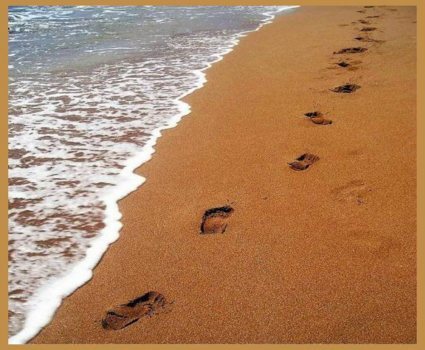

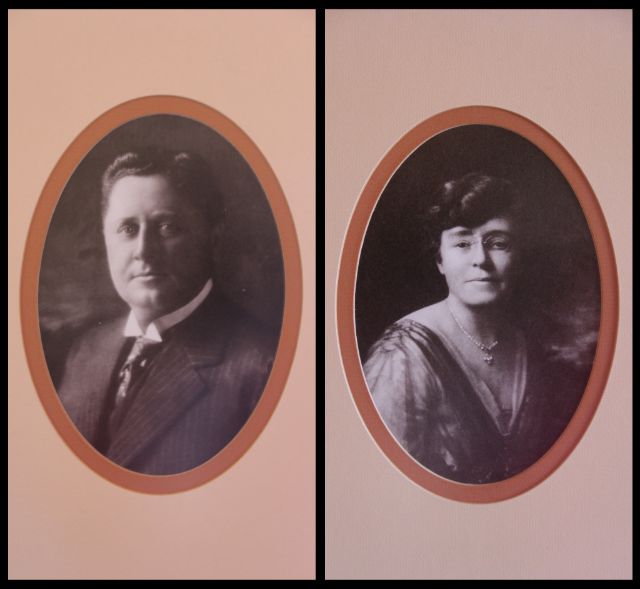
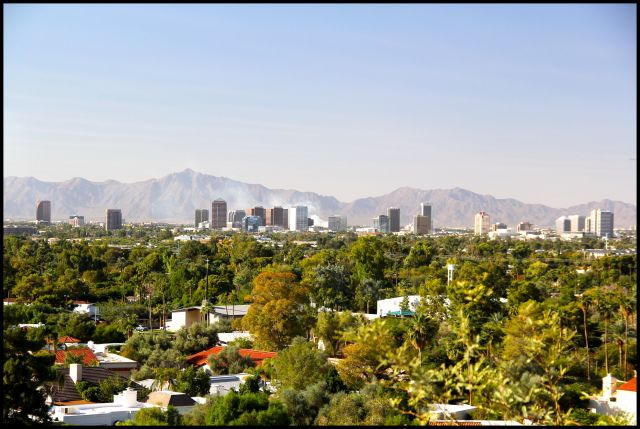
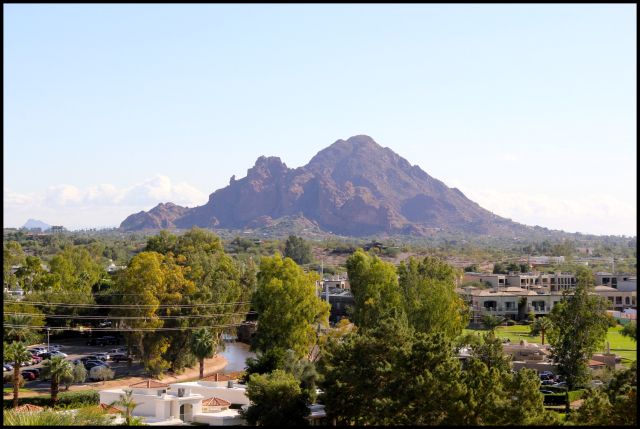
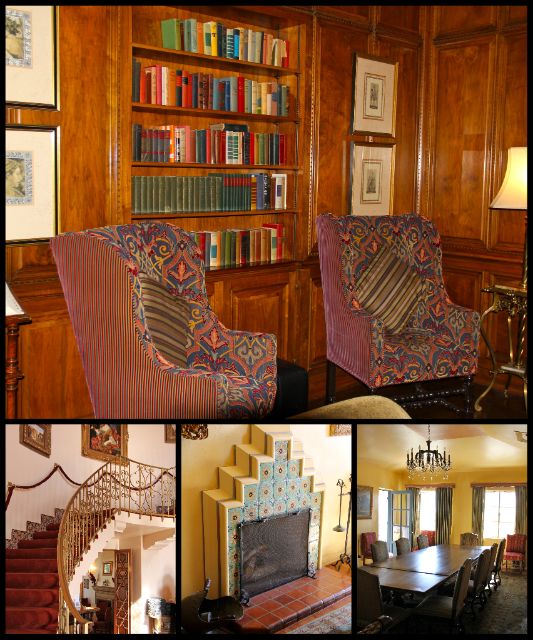
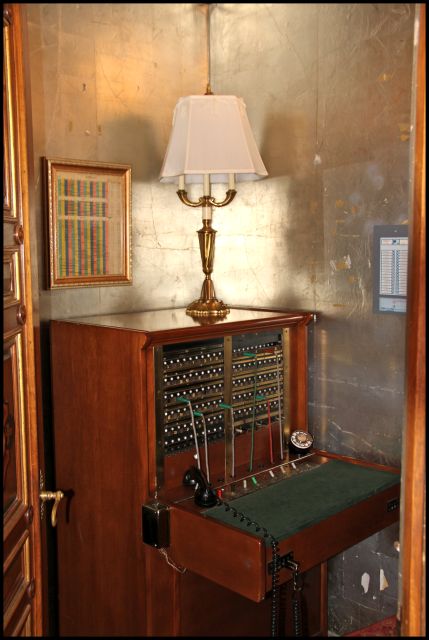

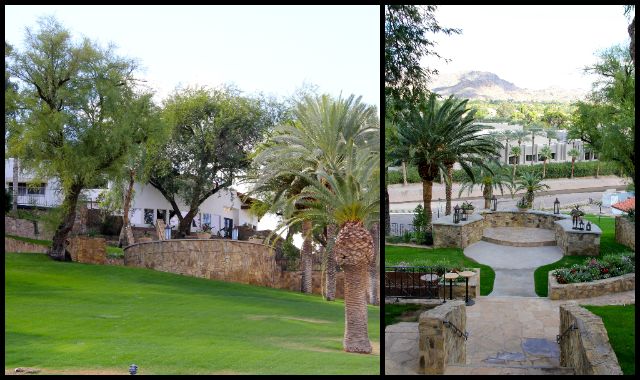
No comments:
Post a Comment